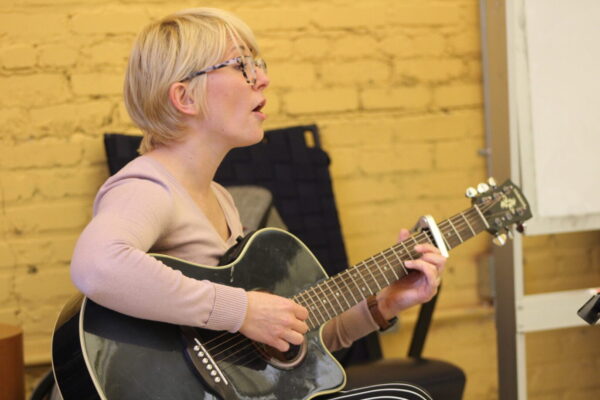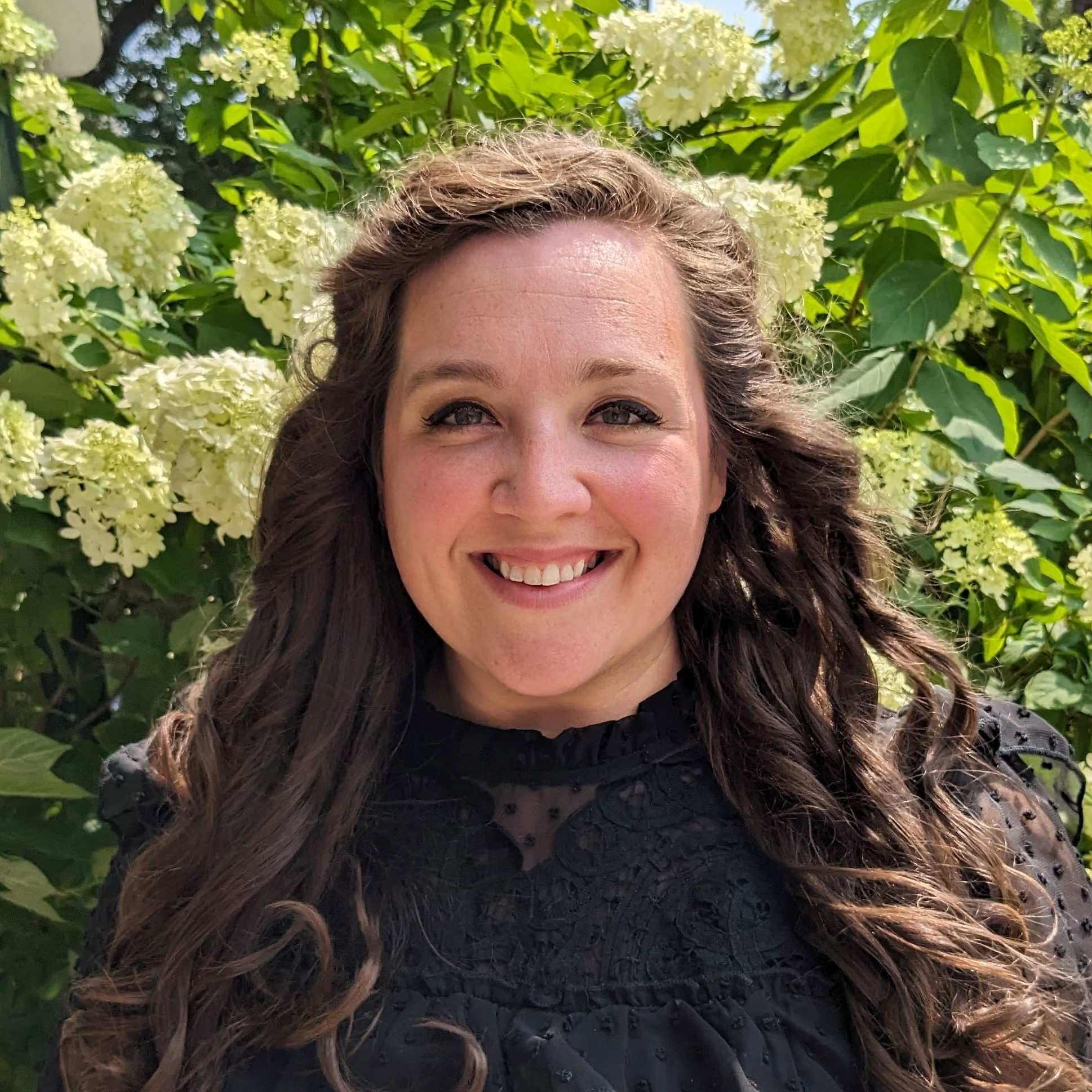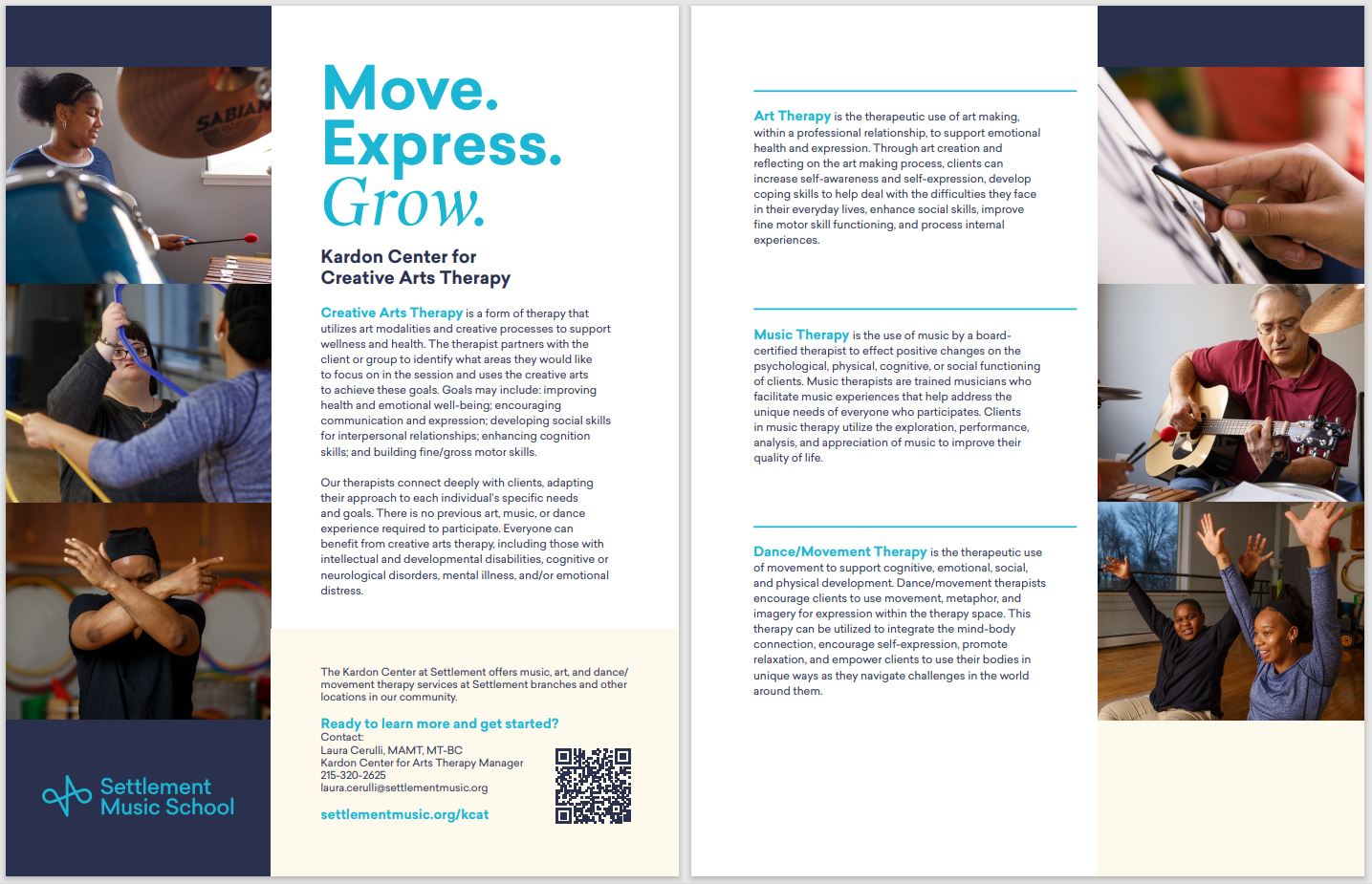Creative Arts Therapy F.A.Q.s

Who can benefit from creative arts therapy?
Anyone can benefit from creative arts therapy! The unique nature of creative expression within a therapy space makes it relatable and less intimidating for clients. Creative arts therapy can help support any diagnosis or difficulties that one can face in everyday life.
What ages of clients do you provide therapy to?
We provide therapy to clients as young as toddlers all the way to senior citizens.
Is there any previous art, dance, or music experience needed to do creative arts therapy?
There is no previous experience required! During the sessions you will learn how to use art, dance, or music in different ways to meet your own goals.
Is there a required length of time to sign up for individual therapy?
No. The therapist, client, and caregivers work closely together to assess goals. If goals are met, there is a change in availability, or the need is no longer present, clients may choose to end therapy. There is no requirement to sign up for a certain number of weeks/months of service.
What is the intake process?
Anyone interested in therapy is encouraged to reach out to Laura Cerulli, the Zausmer Program Manager of the Kardon Center for Arts Therapy. Laura will work with clients/caregivers to discuss the client’s needs and potential goals. Once they establish which type of arts therapy would be most beneficial, Laura works to find a therapist with availability at the client’s preferred branch. Typical sessions are 30 minutes in length. After the day of week and location is picked, Laura will briefly talk with the client/family to discuss pertinent history to provide to the therapist before the initial session.
What does a typical session look like?
The initial session with the therapist takes place with the client and, when appropriate, the client’s caregivers. During this session, the therapist and client/caregiver discuss goals and start to explore the medium of music, art, or dance/movement therapy. All our therapists use a humanistic approach, focusing on person-centered therapy as they provide support to the client. Unless there is a safety concern or physical support needed, subsequent sessions will only take place with the therapist and client. Over the 30-minute session, the client and therapist can verbally process or use art//music/dance/movement interventions to work on the goals established. There is flexibility within the session to try a variety of experiences.
Is creative arts therapy similar to music/art/dance lessons?
No. The goal of music, art, or dance lessons is to be able to proficiently play an instrument, create art, or perform as a dancer. The goal of music, art, and dance therapy is to aid the client to find how they can use the medium to improve their life. Sometimes learning how to play an instrument, creating beautiful art, or becoming a better dancer is a secondary outcome within the therapy session, but the overall goals remain focused on self-improvement.
What materials do I need to bring to participate in creative arts therapy?
Settlement provides the instruments, art supplies, and dance supplies for you to utilize within your therapy session. If there are additional instruments or materials you wish to bring to incorporate into the session, that is allowed but not required to participate.
What Settlement Music School Branches have creative arts therapy?
All 6 of our branches (including Settlement Music Online) offer creative arts therapy! Not all three disciplines of music, art, and dance/movement are available at every branch, but each location has at least 2 offered in house. Feel free to call Laura Cerulli, Zausmer Program Manager of Kardon Center for Arts Therapy at 215-320-2625 to learn about the availability at each branch.
What trainings and degrees does a creative arts therapist have?
All of our therapists have bachelor’s or master’s degrees that provide training in how to integrate music, dance/movement, or art into the therapeutic goals established with the client/caregiver. Most of our creative arts therapists have board certifications from the American Associations for their discipline. Some therapists also hold additional certifications and degrees to further support the therapy they provide.

